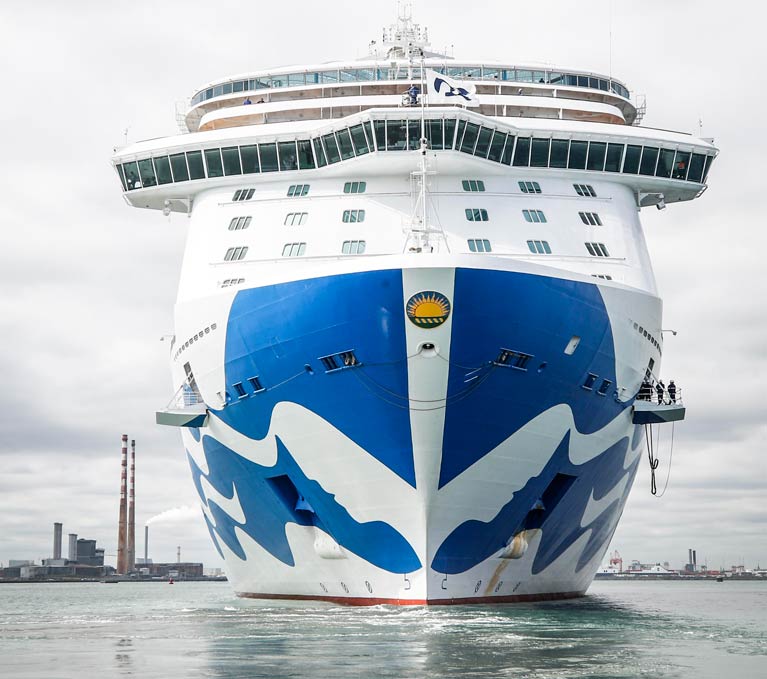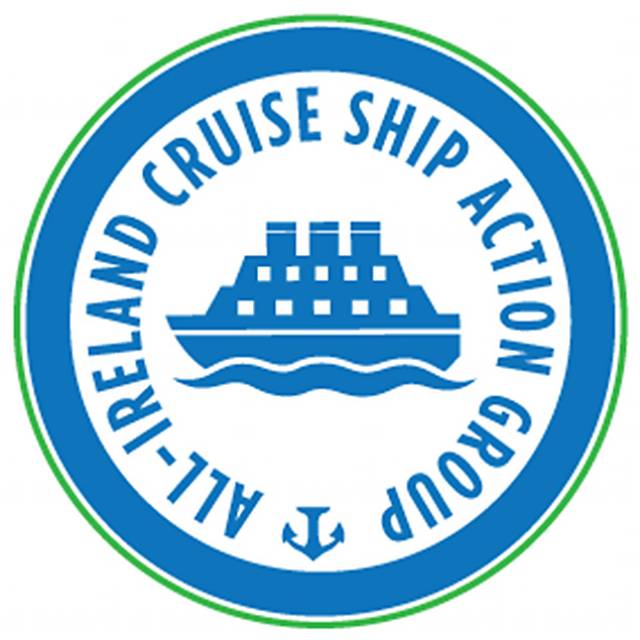A group of businesses across the tourism, retail and transport sectors have come together to campaign against the Dublin Port Company’s surprise ban on cruise ships entering Dublin Port from 2021. The group, which will be known as the All-Ireland Cruise Ship Action Group (AICSAG) was launched today at an event in Buswells Hotel in Dublin.
The group was formed following Dublin Port’s recent decision is in stark contrast to their activity in the past ten years of promoting Dublin Port as a cruise destination and highlighting the benefits cruise ships bring to the Irish economy and tourism business.
As Afloat reported yesterday, Dublin Town, the not for profit organisation charged with creating a welcoming and economically viable city environment in Dublin, has also urged Dublin Port to reconsider its decision to cut cruise ship calls.
 The 330m Royal Princess cruise ship that arrived in Dublin last year carrying more than 3,000 passengers and crew. Her arrival kickstarted a record cruise season for Dublin Port with 151 cruise calls confirmed for 2018, bringing just over 270,000 visitors to the city in 2018. Photo: Conor McCabe Photography.
The 330m Royal Princess cruise ship that arrived in Dublin last year carrying more than 3,000 passengers and crew. Her arrival kickstarted a record cruise season for Dublin Port with 151 cruise calls confirmed for 2018, bringing just over 270,000 visitors to the city in 2018. Photo: Conor McCabe Photography.
AICSAG will be ramping up its campaign to reverse the decision by hosting a series of roadshows and media briefings across the island of Ireland, stopping off at principal locations such as Belfast, Cork and Waterford before travelling to the west and northwest of Ireland. The group is made up of concerned businesses in the retail, transport and tourism sectors who will be severely impacted by Dublin Port’s move. The group has the backing of DublinTown and Retail Excellence Ireland.
According to the Group’s spokesperson Niamh McCarthy, Chief Executive of Excursions Ireland, the Dublin Port Company’s decision will ‘’devastate Irish tourism and is driving a death nail into our business. Last year, cruise ships brought over 442,000 visitors to Ireland and generated over €50 million for the Irish economy. If Dublin Port is allowed to go ahead with its plan, all of this will be lost forever. We are calling on Government and the Minister for Transport, Tourism and Sport to take immediate action to protect our jobs and businesses.’’
Niamh went on to say; ‘’for the past ten years, the Dublin Port Company have played an important role by increasing the numbers of cruise ships docking in Dublin and were at the forefront of highlighting their benefit to the Irish economy. Dublin Port have performed a complete sea change, to everyone’s amazement. Their latest damaging strategy has come out of nowhere and will risk the many thousands of jobs in Ireland dependent on the sector. This sudden change in policy is a total shock to both the all-Ireland tourism sector and its international stakeholders.’’
According to the other spokesperson, AICSAG member Feargal Barton of Barton’s Transport, the Dublin Port Company’s decision will also have a catastrophic impact on Ireland’s other port cities of Belfast, Cork and Waterford. ‘‘The cruise companies market Ireland as a destination, and in addition to Dublin the cruise ships stop off at Belfast, Waterford and Cork. Without access to Dublin Port, cruise companies will no longer stop in other Irish ports and will take their business to other European destinations. The cruise companies arrange cruises and marketing plans two years in advance, so urgent action is required to save the business for the 2021 season.’’
The recent decision by the Dublin Port Company to stop cruise ships docking at Dublin Port from 2021 was taken without any consultations or engagement with the Minister for Transport, Tourism and Sport, local businesses, Dublin City Council, or the other Irish ports, namely Belfast, Waterford and Cork, who will be severely impacted by this decision.































































